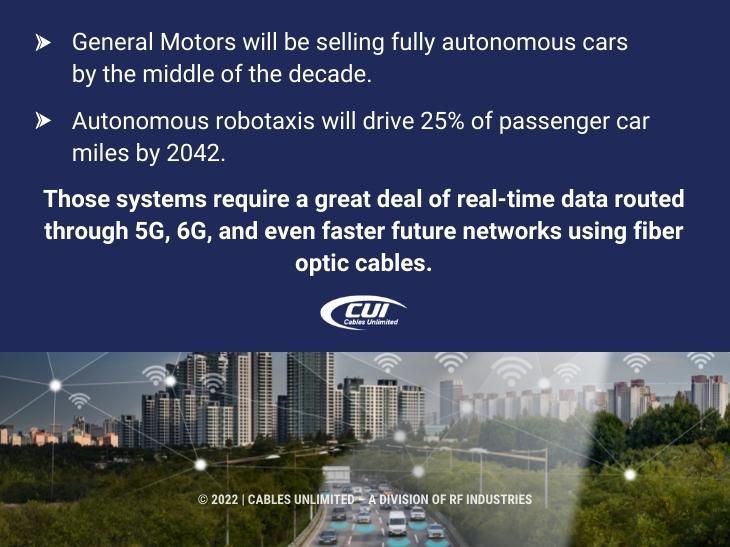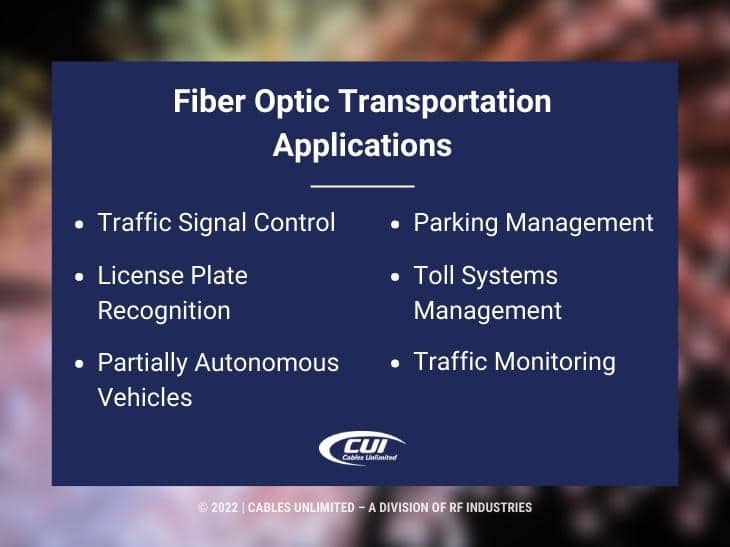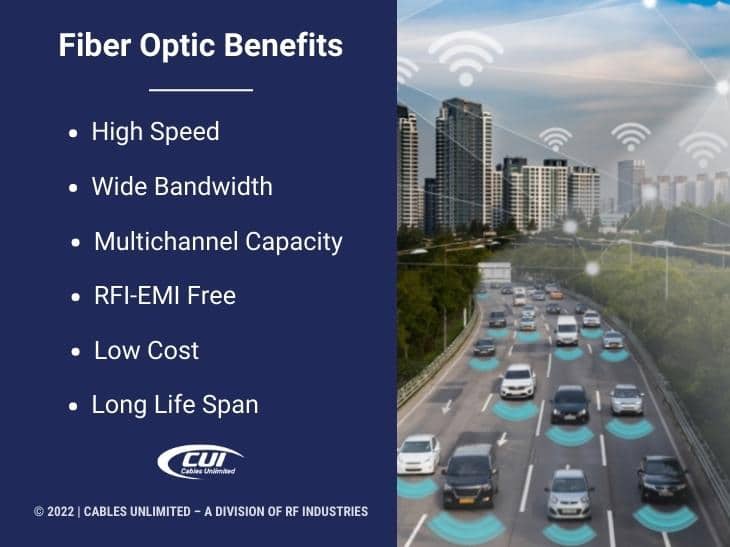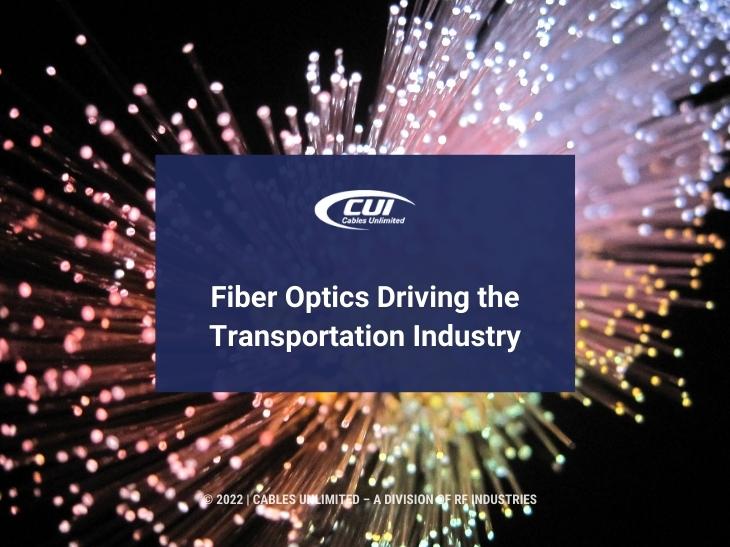Autonomous cars claim the headlines, with General Motors announcing at the 2022 Consumer Electronics Show that they will be selling fully autonomous cars to consumers by the middle of the decade. Further, a recent research report projects that autonomous robotaxis will drive 25% of passenger car miles by 2042.
In the here and now, Intelligent Transportation Systems (ITS) are already in service and expanding rapidly. ITS is used for everything from traffic monitoring and control to parking management.
All of those systems require a great deal of real-time data, data routed through 5G and 6G networks, and even faster future networks using fiber optic cables.
This article dives into fiber optics transportation industry applications and their benefits.

Fiber Optics Transportation Applications
We touched on some of the applications above. In the here and now, the applications below are already in place and expanding worldwide.
- Traffic Signal Control. Many stop lights use embedded detection loops to trigger the traffic light based on stopped traffic. With ITS real-time monitoring, decisions can be made to open an intersection to continuous flow relieving traffic build-up. This can be implemented through human intervention or automated systems.
- Traffic Monitoring. This covers monitoring traffic congestion as well as incident detection and response. Actions can take the form of opening more lanes and sending messages to divert traffic. Those messages include digital signs along the road and smartphone applications to advise on traffic problems and point out new routes.
- License Plate Recognition. Cameras can capture license plates and report the data to law enforcement organizations. They can capture running red lights, speeding infractions, and even locate missing people or fugitives. We’re only beginning to realize the full range of possibilities.
- Toll Systems Management. This system monitors automobile toll tags to charge drivers’ accounts. They can also use the license plate recognition application to send bills to consumers who are not registered. Furthermore, using traffic monitoring, toll rates can be higher during peak traffic congestion and lower during off times.
- Parking Management. This system includes controlling access, reporting parking space availability, taking payment, enforcing violations, and routing cars to other lots when one lot is full. Like all these applications, it takes plenty of data to drive the system.
- Partially Autonomous Vehicles. As noted above, there are quite a few predictions of when fully autonomous vehicles will be on the road. Yet some vehicles are already in action with partial automation supported by driver monitoring. At the heart of all this are onboard vehicle monitoring systems, which use a great deal of fiber optic cable assemblies, and the supporting data of cellular networks, which are built using miles of fiber optic cables.

Fiber Optic Benefits
Those applications and many more use sensors, cameras, and other data-gathering devices to collect information. That data must be transmitted and processed. At the heart of the transmission are networks built with fiber optic cabling. Fiber optics bring an entire host of benefits. Here are a few.
- High Speed. The theoretical limit on fiber optics is the speed of light. Typical broadband network speeds are 1 Gbps for roughly 88% of U.S. home Internet service. The future is expected to be in the 10 Gbps range, even though Google currently has one cable operating at 60 Tbps.
- Wide Bandwidth. Fiber optic bandwidth is up to 4.7 GHz. And it can provide that bandwidth at a distance of 80 km. Twisted pair, however, has similar bandwidth but only for roughly 100 meters. Coax tops out at 750 MHz bandwidth up to 500 meters. Clearly, fiber optic cabling offers a huge bandwidth advantage.
- Multichannel Capacity. Fiber optics’ high bandwidth allows room for multiple channels, each with its own frequency. The number of channels can be further expanded through multiplexing techniques.
- RFI-EMI Free. Unlike copper cables, fiber optic cables contain the signal within the fiber in the form of light waves. That means there is no radiation causing electromagnetic interference and no externally generated radio frequency interference that can enter the cable. That also means that it is a highly secure cable.
- Low Cost. The primary comparison is between the copper used in twisted pair or coaxial cables and the glass used in fiber optic cables. The glass wins hands down every single time.
- Long Life Span. Fiber cables can be damaged by twisting or bending during installation. But once in place, it’s estimated that they can last for over 100 years.
How Fiber Optic Broadband is Transforming Industries Across the USA

We Can Help
Our name is Cables Unlimited for a reason. Whatever fiber optic cable assembly or wire harness you need, we can provide it.
If your requirements are already specified and ready for a quote in your current projects, we are prepared to meet your deadlines and pricing targets. Our extensive in-house services and advanced manufacturing capabilities are in place to meet your requirements.
But Cables-Unlimited offers much more than state-of-the-art manufacturing – our dedicated team is also known for going to great lengths to meet the needs of our customers, including working round-the-clock to meet tight turnaround time requirements.
Our sales representatives are standing by to assist you with product questions and quotes Monday – Friday, 8:00 am to 5:00 pm Eastern. You can also send us an email or complete our contact form, and we’ll get right back to you.




